An elctrical circuit is shown in Fig. Calculate the potential difference across the resistor of 400 ohm, as will be measured by the voltmeter V of resistance 400 ohm, either by applying Kirchhoff's rules or otherwise.
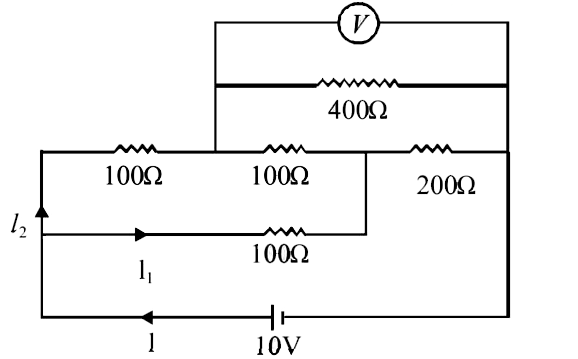 .
.
We can redraw the circuit as.
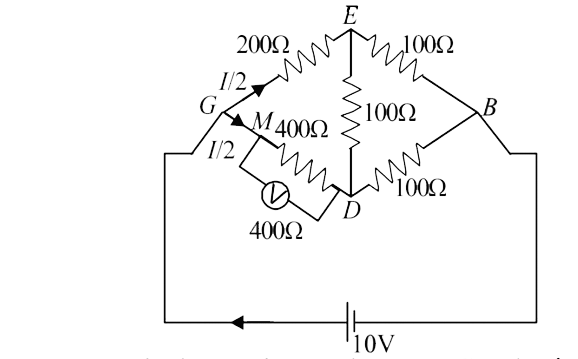
The equivalent resistance between G and D is
RGD=400×400400+400=200Ω
Since, RGERGD=REBRDB
∴ It is a case of balanced wheatstone bridge.
The equivalent resistance across G and B is
RGB=300×300300+300=150Ω
∴CurrentI=VRGB=10150=115Amp.
NOTE : Since RGEB=RGDB the current is divided at G into
two equal parts (I/2). The current 1/2 further divides into
two equal parts at M.
Therefore, the potential difference across the voltmeter
I4×400=115×4004=203vo<=6.67V .
Topper's Solved these Questions
Similar Questions
An electrical circuit is shown in figure. Calculate the potential difference across the resistor of 400Ω as will be measured by the voltmeter Vof resistance 400Ω either by applying Kirchhoff's rules or otherwise.

View SolutionCalculate the potential difference across the resistor of 400Ω as measured by the voltmeter Vof400Ω either by applying Kirchhoff's laws or otherwise
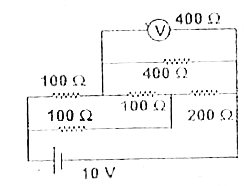
View Solution
Knowledge Check
In the circuit shown below:

The potential difference across the 3Ω resistor is:A19VB12VC1VD2VIn the figure the potential difference across 6 ohm resistor is 48 V. Then the potential difference between A and B is
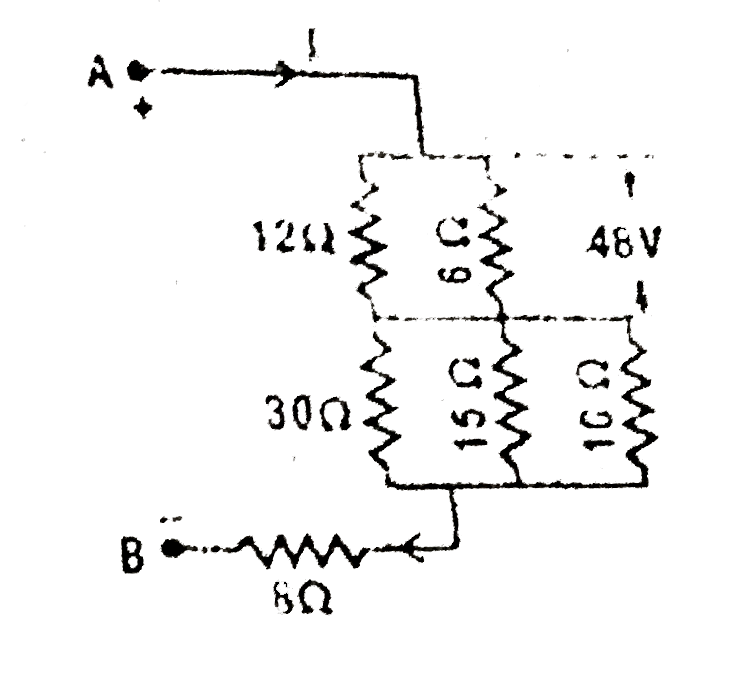 A48 VB102 VC204VDcan't be determined
A48 VB102 VC204VDcan't be determinedThe potential difference across the 100Ω resistance in the following circuit is measured by a voltmeter of 900Ω resistance. The percentage error made in reading the potential difference is
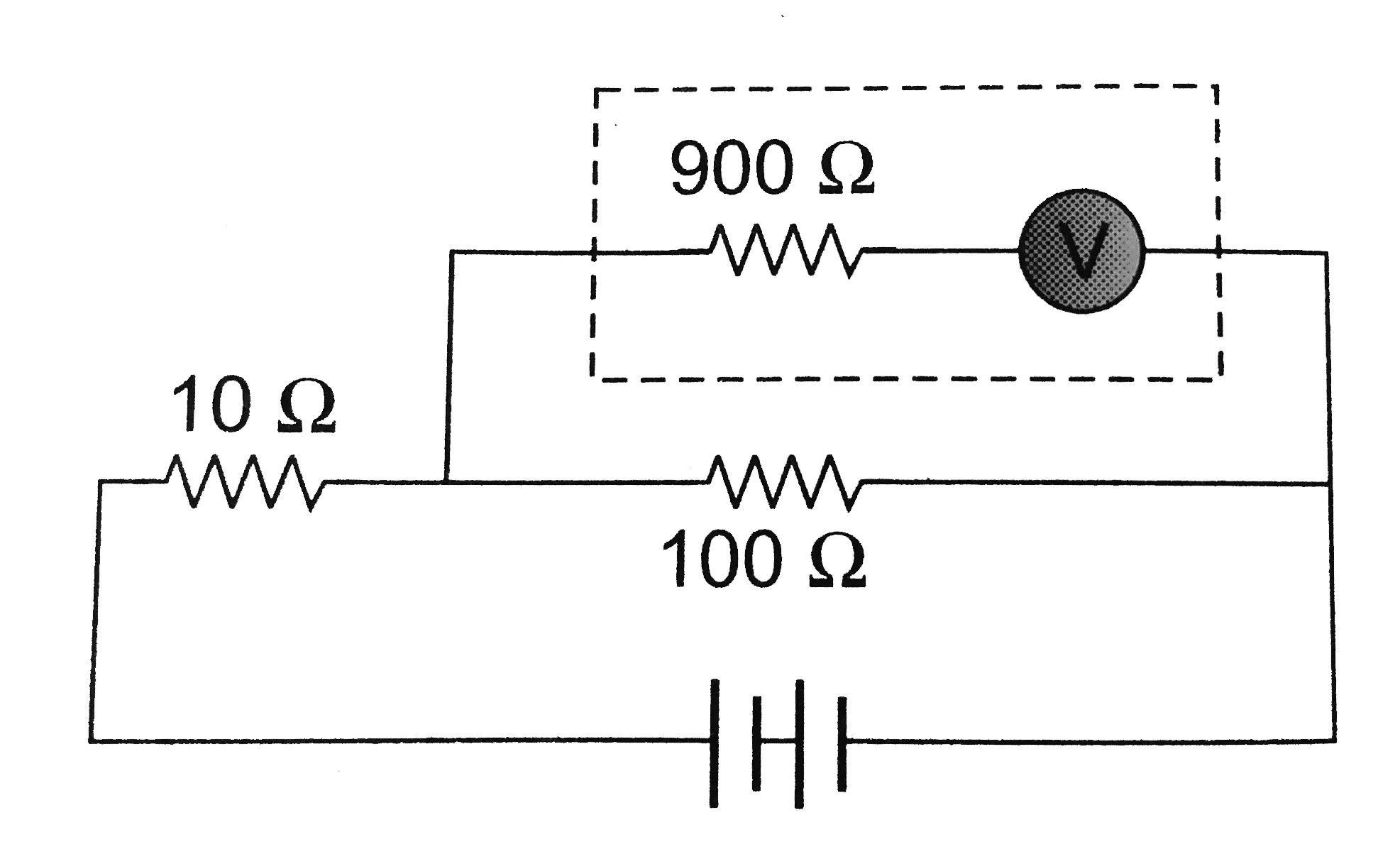 A109B0.1C1D10
A109B0.1C1D10
In the given circuit find potential difference across 10ohm resistance

View SolutionIn the circuit shown in Fig. 4.41, calculate the current in each resistor and potential difference across each resistor.
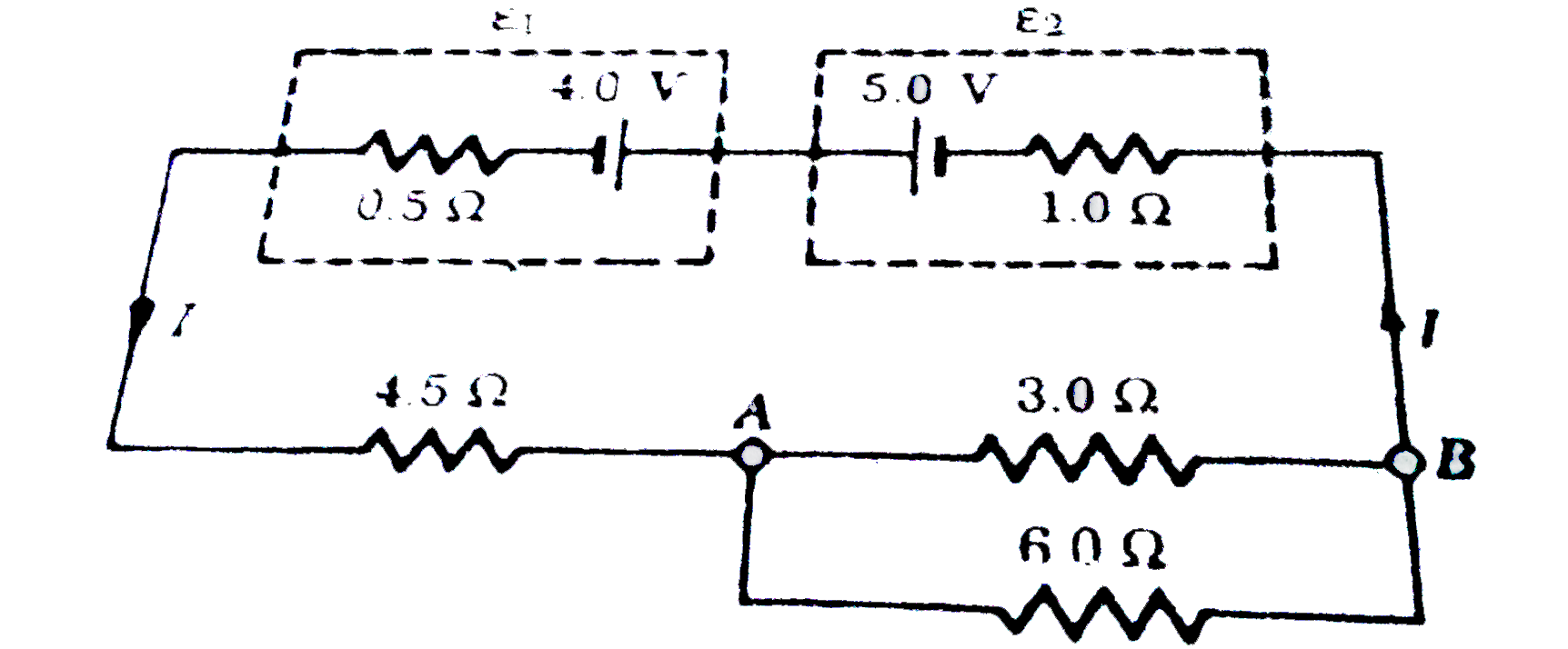
View Solution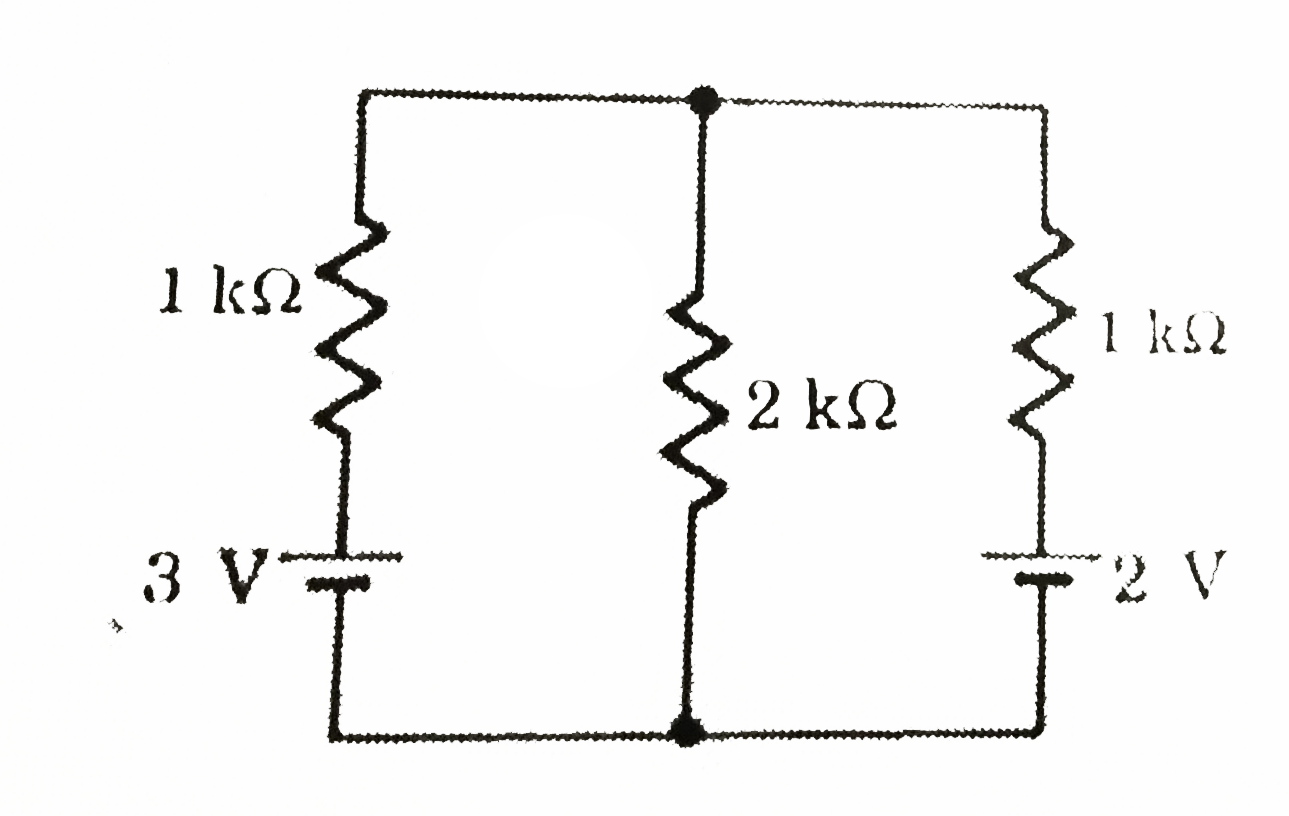
Calculate the potential difference across the 2k Ω resistor in the circuit shown in figure. The internal resistance of the cells are negligible.
View SolutionIn the circuit shown in Fig. calculate
(i) current in the circuit
(ii) Potential difference across each element.
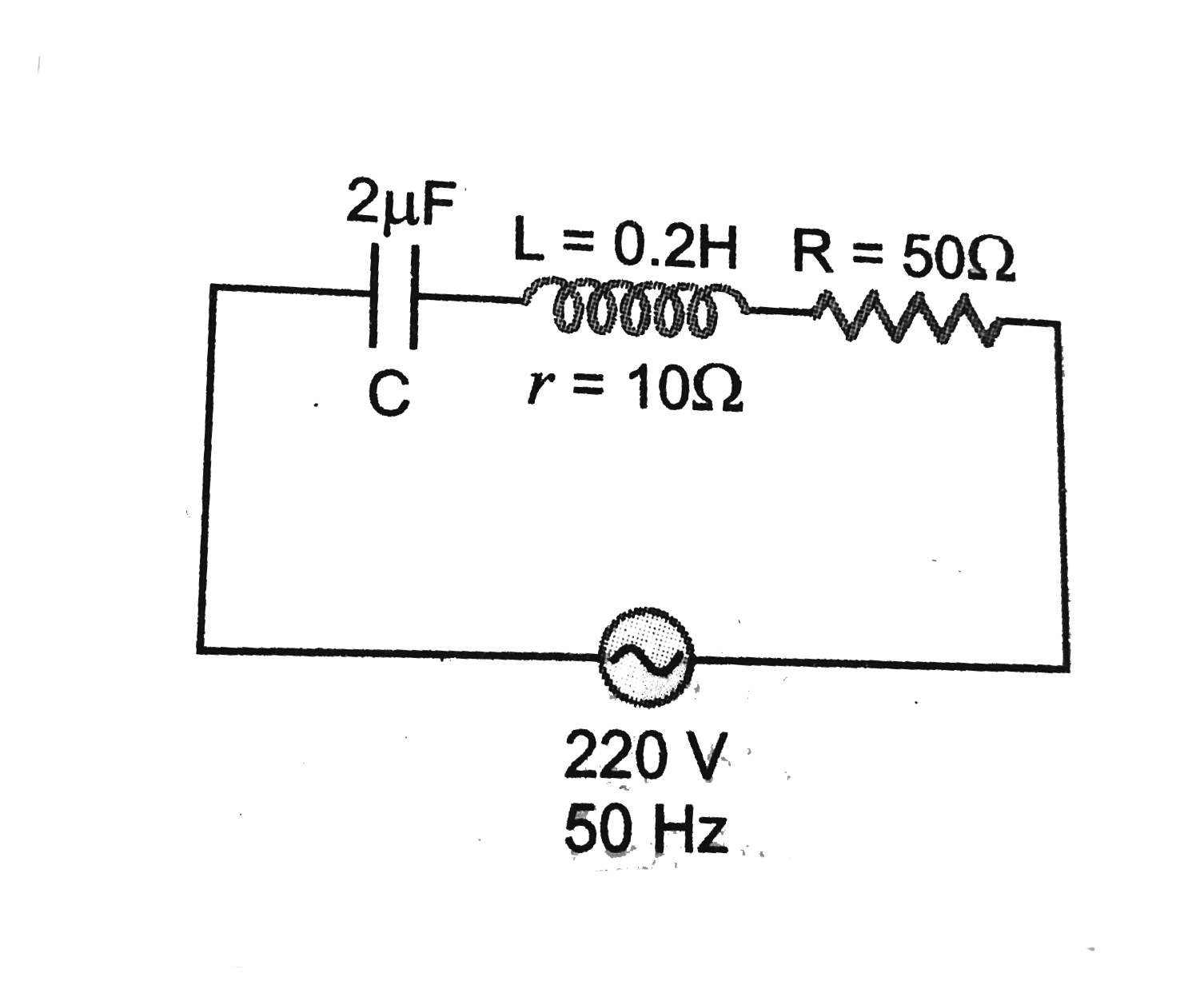
View SolutionThe potential difference across the terminals of a cell is 1.5 volt.It is connected with a resistance of 30ohms. Calculate the current flowing through the circuit.
View Solution
